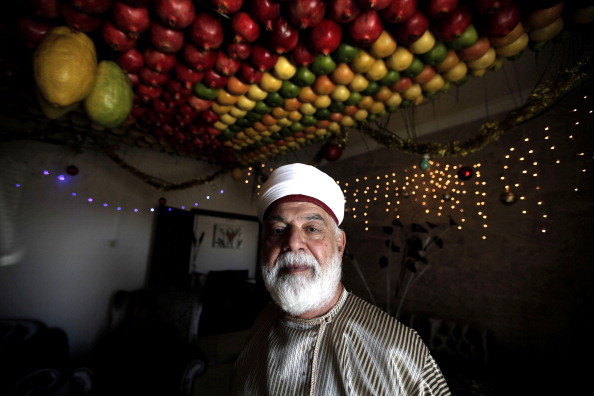Sukkot 2014: Facts about Jewish Feast of Tabernacles

Sukkot is one of the most important holidays for Jewish people and it is celebrated on the 15th day of the month of Tishrei, which this year falls on 8 October.
It is one of the Three Pilgrimage Festivals – together with the Pesach, or Passover, and the Shavuot, or Feast of Weeks - during which Jews living in the Kingdom of Judah would make a pilgrimage to the temple in Jerusalem.
Meaning of the festival
Sukkot is the plural of the Hebrew words for booth or tabernacle and it is commonly translated as the Feast of the Booths or the Feast of the Tabernacles.
It has both a religious and an agricultural significance. It commemorates the dwellings built by Israelites during the 40-year-long period in which they lived in the Sinai desert after leaving Egypt.
According to the book of Leviticus, God told Moses Israelites should "live in booths seven days; all citizens in Israel shall live in booths, in order that future generations may know that I made the Israelite people live in booths when I brought them out of the land of Egypt".
Sukkot is also a harvest festival and is sometimes referred to as Chag Ha-Asif, the Festival of Ingathering.
The first known description of Sukkot can be found in the Torah's Book of Kings, which narrates that the Tabernacle built by Moses in the desert to house the Ark of the Covenant was brought to Jerusalem during Tishrei and many animals were sacrificed.
Hoshana Rabbah
Sukkot lasts for seven days for people living in Israel, and eight days for the Jews in diaspora. The first day is like the Sabbath: a day of rest in which work is forbidden. The following days are known as Chol Hamoed, or festival weekdays.
During the seventh day - Hoshana Rabbah, the Great Hosanna - people go to the synagogue to perform a ritual during a special synagogue service.
In the synanogue, people make seven circuits around the bimah, the central point of the religious building - instead of the one circuit done the other days of Sukkot - while reciting the Hoshaanot prayers.

The Four Species
On each day of Sukkot, with the exception of the Sabbath, people take the Four Species, or Four Kinds - a citrus, a palm frond, a myrtle twigs and two willow twigs - and recite a blessing over them. Then they wave the Species in six directions: right, left, forward, up, down and backward. The waving ritual symbolises the service to God.

Sukkah
During Sukkot people build a sukkah, a booth that is usually made of wood, canvas, or aluminium siding. The roof must be of organic material, as palm fronds. It is customary to decorate the interior of the sukkah with hanging decorations made of the four kinds.
Sukkot and Christianity
Sukkot is also observed by a number of Christians as this holiday is also mentioned in the Bible's Old Testament. The holiday is celebrated according to the Hebrew calendar.
© Copyright IBTimes 2025. All rights reserved.






















